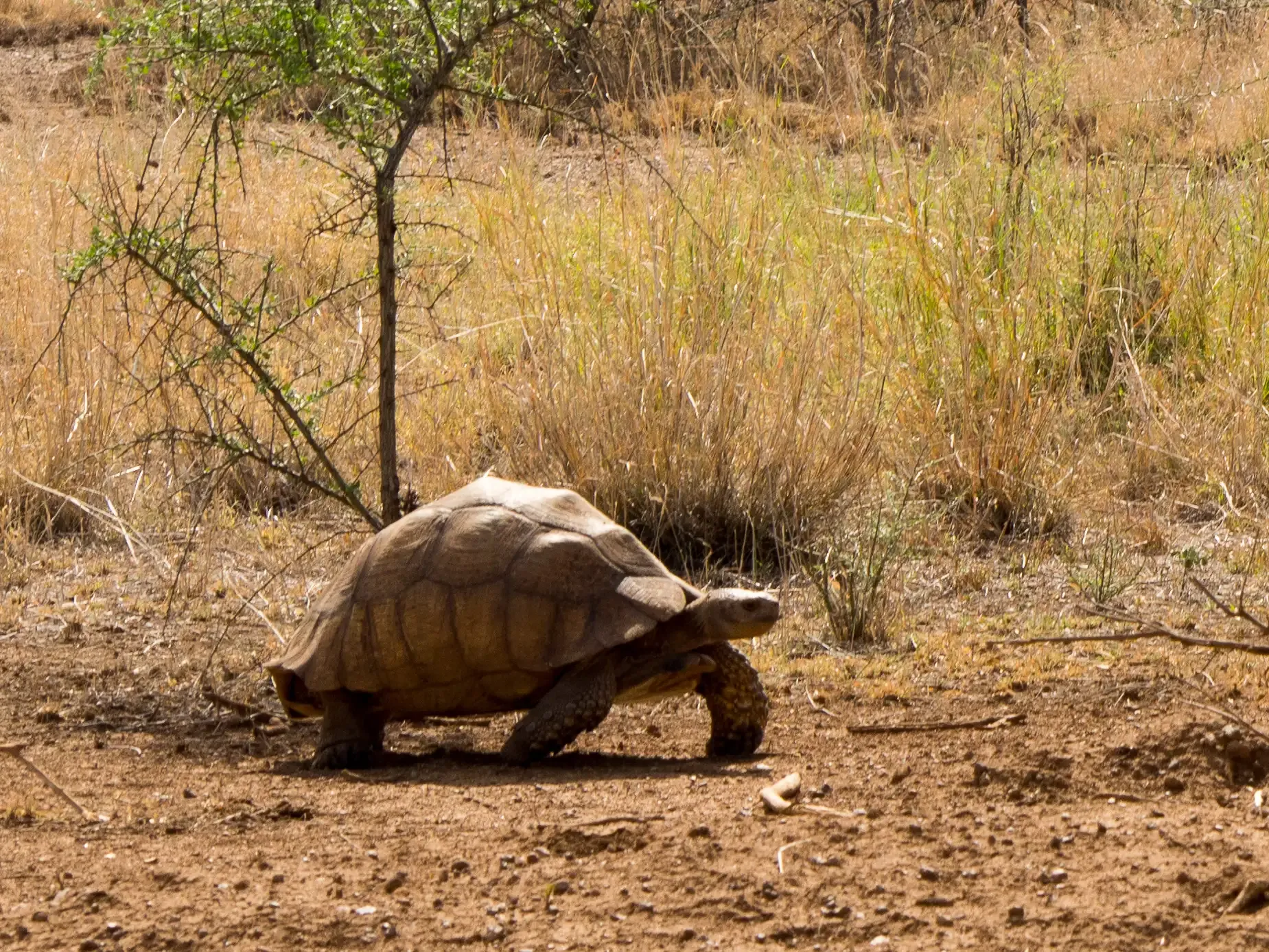African Spurred Tortoise Everything you Should Know
The African Spurred Tortoise, also known as the Sulcata Tortoise, The scientific name of the African Spurred Tortoise is Geochelone sulcata. These incredible creatures are one of the largest species of tortoises in the world, and they have some truly unique features that set them apart from other tortoises. These tortoises are well-adapted to hot and arid climates, with their unique shell structure helping them retain moisture and regulate their body temperature.
 |
| African Spurred Tortoise |
Sulcata Tortoise Habitat
African Spurred Tortoises prefer dry, arid environments with plenty of sunshine. Primarily found in the semi-arid regions of the Sahel region of Africa, stretching from Senegal to Sudan, where they inhabit grasslands, savannas, and scrub forests, where they roam grasslands and shrublands in search of food and water.
Sulcata Tortoise Physical Features
African Spurred Tortoises are known for their distinctive high-domed carapace, which can grow up to 30 inches in length and weigh over 100 pounds. Their impressive size makes them the third largest species of tortoise in the world, following the Galapagos and Aldabra tortoises.
One of the most striking features of the African Spurred Tortoise is its large, spiky scales that cover its shell. The shell is covered in deep, grooved ridges.
These ridges not only provide protection but also help regulate the tortoise's body temperature by absorbing and releasing heat. Additionally, their shells are a beautiful blend of dark brown and yellow, creating a stunning visual appearance.
The African Spurred Tortoise also has a hinged plastron, or lower shell, which allows it to retract its limbs completely into its shell for added protection.
In addition to their unique shell, African Spurred Tortoises have thick, strong legs that allow them to dig burrows and navigate rough terrain with ease. They also have a large, blunt head with a hooked beak that is perfect for browsing tough vegetation. Their eyes are small and located high on their heads, giving them a good vantage point to watch for predators while they forage for food.
Sulcata Tortoise Diet
African Spurred Tortoises are herbivores, meaning they primarily eat plants and vegetation. In the wild, they feed on a wide variety of grasses, succulents, and leafy greens. In captivity, it's important to replicate this diet by providing them with a diverse selection of greens, vegetables, and fruits. These tortoises are highly resilient to drought conditions; they can store water in their bodies for extended periods of time.
Sulcata Tortoise Behavior
In the wild, African Spurred Tortoises are solitary animals that roam vast areas in search of food and water. They are expert burrowers, using their strong forelimbs to dig deep tunnels that provide shelter from extreme temperatures and predators. These burrows also serve as a refuge during the dry season, when food and water are scarce.
When threatened, African Spurred Tortoises retract into their shells, using their thick, armored plates to protect themselves from predators. Despite their slow pace, these tortoises can move surprisingly fast when they need to, using their powerful legs to navigate their environment. These tortoises are excellent swimmers and can hold their breath underwater for extended periods.
Sulcata Tortoise Reproduction and Life Cycle
African Spurred Tortoises reach sexual maturity around 15–20 years of age. These tortoises are solitary creatures, only coming together during the mating season. During the mating seasons, the males display dominance through aggressive behaviors and vocalizations. Mating occurs during the rainy season, and females will lay clutches of eggs in shallow nests dug into the ground. The incubation period can last several months, with hatchlings emerging in the warmer months. The survival rate of hatchlings in the wild is low, with predators like birds and mammals posing a threat.
How Sulcata Tortoise Communication?
African Spurred Tortoises are not particularly social animals and are often found living solitary lives in the wild. However, they do exhibit some interesting behaviors, such as head bobbing, to communicate with other tortoises or to assert dominance. During mating season, they communicate through a series of clicks and hisses.
Sulcata Tortoise Conservation Status
African Spurred Tortoises face numerous threats in the wild, including habitat destruction, poaching for the pet trade, and competition with livestock for resources. They are currently listed as endangered species on the IUCN Red List.
Keeping African Spurred Tortoises as Pets
Despite their large size, African Spurred Tortoises are relatively gentle and docile creatures. They are known for being curious and friendly towards their human caretakers, and they can form strong bonds with their owners over time. These tortoises can live for over 70 years in captivity, making them a long-term commitment for any potential owner.
While African Spurred Tortoises are fascinating creatures, they are not suitable pets for everyone. These tortoises require a large, secure enclosure with plenty of space to roam and dig. They also need a diet rich in fiber and calcium to maintain healthy shell growth. In addition, African Spurred Tortoises are sensitive to cold temperatures and should be kept in a warm, humid environment to thrive. Potential owners should also be aware that these tortoises can grow to be quite large and may require specialized care as they age.
Conclusion
The African Spurred Tortoise is a remarkable creature that is
well-adapted to its arid habitat in the Sahel region of Africa. With its
impressive size, resilience, and unique characteristics, this tortoise is a
true marvel of nature. While keeping an African Spurred Tortoise as a pet
requires dedication and commitment, the rewards of caring for one of these
magnificent reptiles are truly unparalleled.





